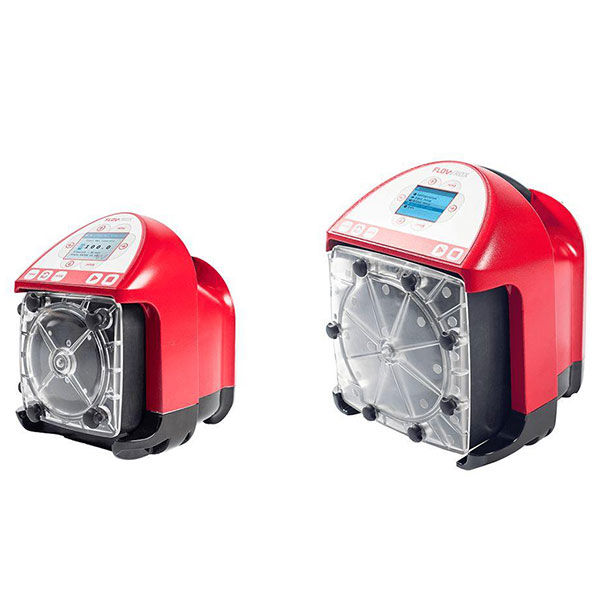Our Flowrox™ FXM metering pumps are ideal for but not limited to chemical dosing applications which require accurate metering. The pump offers a 5000:1 turndown ratio which can be controlled remotely (4-20mA, 0-10VDC, Frequency) or locally by a large LCD control pad. The pump also utilizes a non-contact capacitance sensor to detect tube failure; the pump will shutoff and can send an output alarm to the PLC/Controls. We offer FXM2 and FXM3 series pumps that only has one wear- resistant part (tube assembly) in contact with corrosive or abrasive mediums. Flowrox FXM pumps have a low consumption of spare parts which allows reduced maintenance and downtime to improve process performance and provides accurate dosing.

Flowrox FXM pumps are ideal for pumping water treatment chemicals, reagents for mining processes, pulp & paper chemical metering or for various industrial chemical dosing duties.
A diaphragm pump typically requires more intensive and more frequent repairs compared to peristaltic pumps. Users need to be aware about the pump’s valve operation, proper priming & discharge conditions, feed rate adjustments, etc. The diaphragm pump should be used in low pressure operation and the media should be clean and free of particulates to avoid clogging the check valves. If you’re pumping any type of chemical that’s subject to off-gassing or crystallizing, this could also cause issues to the check valves and the pumps ability to operate.
Our FXM peristaltic pump is more user-friendly as it doesn’t require a lot of set up to operate in a system. It can pump dirty, off gassing, and crystallizing fluids as well as undissolved particulates as the tube is the only part in contact with the media – there are no valves or seals involved. Another advantage to the peristaltic pump is that they can run dry for extended periods without causing damage to the pump. Not widely known, but peristaltic pumps offer extremely low shear pumping so shear sensitive mediums will not be altered during the process.
Peristaltic pumps are excellent for suction lift applications where the source is below the pump; cavitation or low NPSHa is not an issue. We can ensure accurate dosing by the positive displacement of the tube bore with zero slip that produces the same volume on every cycle. Consequently, there is little to no flow variation due to the discharge pressure condition. The compression points of the tube acts as a self-cleaning check valve without clogging which helps eliminate the risk of vapor lock. It also takes a couple of minutes to replace a tube, so the down time is very minimal. In all, the peristaltic pump is more "plug & play" and can be used for a wide range of applications; it doesn’t require special attention that a diaphragm would need.